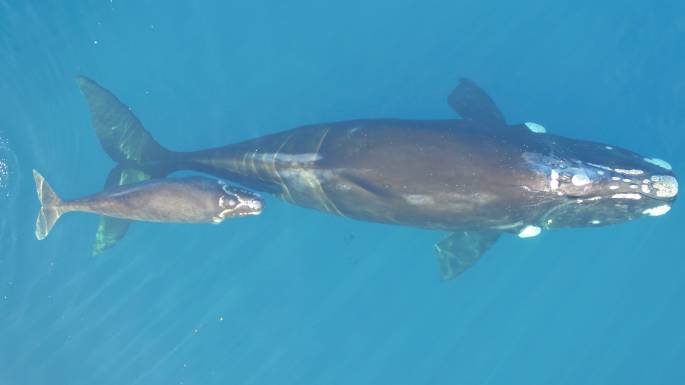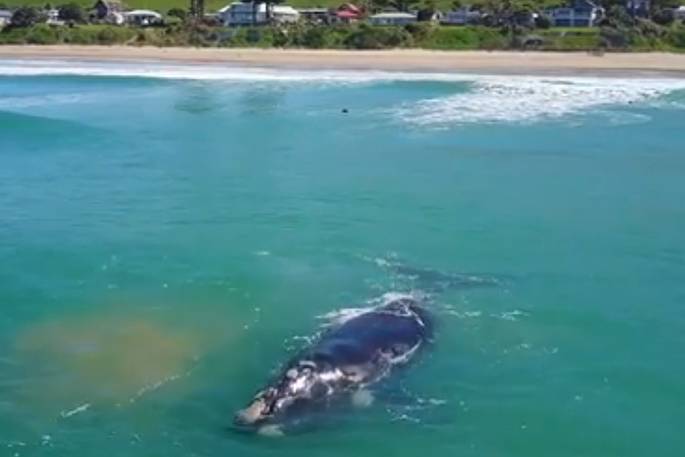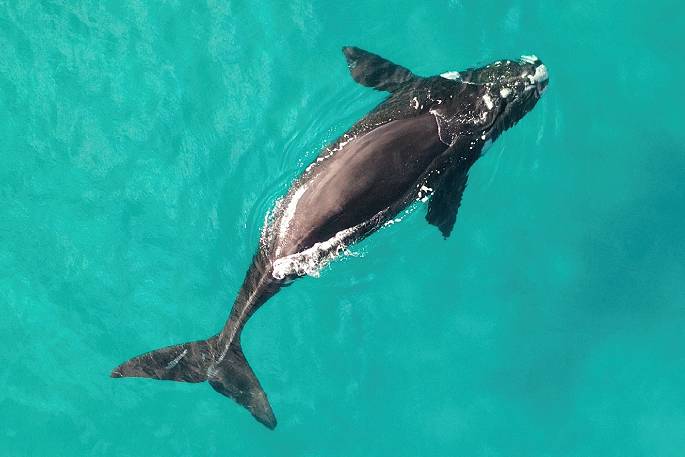Social media posts helped scientists to monitor one of Aotearoa's rarest whale species, the infrequently sighted southern right whale, or tohorā.
Photographs shared by members of the public, via Facebook and nature-watching network iNaturalist, helped scientists assess how the species is faring around the Aotearoa New Zealand mainland.
Carried out in cooperation with the Department of Conservation and published in the journal Ocean and Coastal Management, the study reveals that southern right whales are slower than expected at re-establishing a habitat in mainland waters.
The research was led by Annabelle Cranswick, a masters student in the Faculty of Science at Waipapa Taumata Rau, University of Auckland.
Sightings of the whale rose between 2003 and 2010, but the increase wasn't sustained over the past decade, Cranswick found.
That's despite some high-profile incidents such as the appearance of Matariki, the southern right whale which captured the nation's heart while lingering in Wellington Harbour in 2018.
One possibility is that the species' knowledge of mainland wintering grounds was lost when numbers crashed because of whaling.
'Photos supplied on social media and by citizen scientists are proving so important for us to monitor populations of these recovering whales,” says Cranswick.
 Photo: University of Auckland/Tohora Research Team.
Photo: University of Auckland/Tohora Research Team.
'We can assess that yes, this is a southern right whale, and discover how long a whale stayed in a particular area.
'Even a distant photo, showing just part of a whale, can be helpful,” says Cranswick.
'We can pick a southern right from just the white patches called callosities on the head, their flat back which lacks a dorsal fin, or even their large paddle-shaped pectoral fins.”
Information on population demographics aids conservation efforts.
Facebook and iNaturalist photos supplemented a Department of Conservation – Te Papa Atawhai database that largely relies on citizen scientists' whale sightings. Scientists focused on 116 sightings over 11 years (2011–2021) in the waters around mainland New Zealand, including the North (Te Ika a Māui), South (Te Waipounamu), and Stewart (Rakiura) islands.
'We went through ten years of social media data to extract these sighting reports,” says Hannah Hendriks, a marine biologist with the Department of Conservation.
'There are very few whale researchers and rangers scattered across the country, so we rely on the public to be our eyes and ears.”
Bobby Phuong, a postie in Christchurch who's an enthusiastic amateur wildlife photographer, shot one of the images to feature in the study.
 Southern right whale. Photo: Bobby Phuong.
Southern right whale. Photo: Bobby Phuong.
He drove for nearly an hour to see a whale and calf at Sumner in August last year, sharing his photos via Facebook.
'They were remarkable to witness and I'm glad my photos have helped in some way,” he says.
In Gisborne, Wainui Beach resident Ian Ruru captured images of a southern right whale frolicking in the waves, metres away from surfers, in September 2018.
 Photo: Ian Ruru.
Photo: Ian Ruru.
'She sat directly in front of our home for eight hours that day… I guess she wanted her story to be told... Paikea we called her,” says Ruru.
A note to would-be citizen-scientists: Photographers must stay 50m from adult whales and 200m from whales with calves.
Southern right whales were hunted to near extinction, with global numbers falling to as low as 500.
By 2009, an estimated 2200 of the whales were in New Zealand waters, moving between the sub-Antarctic Auckland Islands (Maungahuka) and Campbell Island (Motu Ihupuku), and occasionally being found around mainland New Zealand including Stewart Island (Rakiura). Numbers are slowly recovering.
'Social media provided detailed information from areas with lots of people and lots of cameras,” says Dr Emma Carroll, of Waipapa Taumata Rau, University of Auckland, who is a co-author of the study.
'Where there are fewer people, like the west coast of Te Waipounamu (the South Island), information from the public and Department of Conservation rangers recorded in the national database was more important.”
Because southern right whales come close to shore, many photos were from clifftops or even the beach.
Southern right whales remain such a rarity around the New Zealand mainland that it's possible there will be only a single sighting in a year.



0 comments
Leave a Comment
You must be logged in to make a comment.